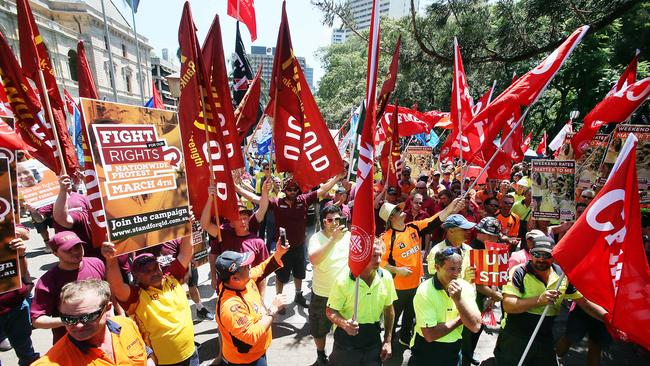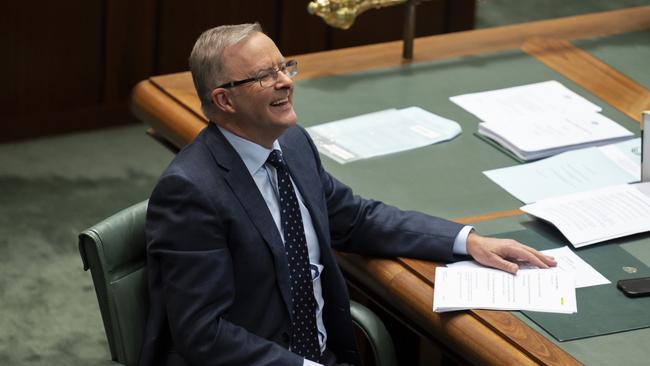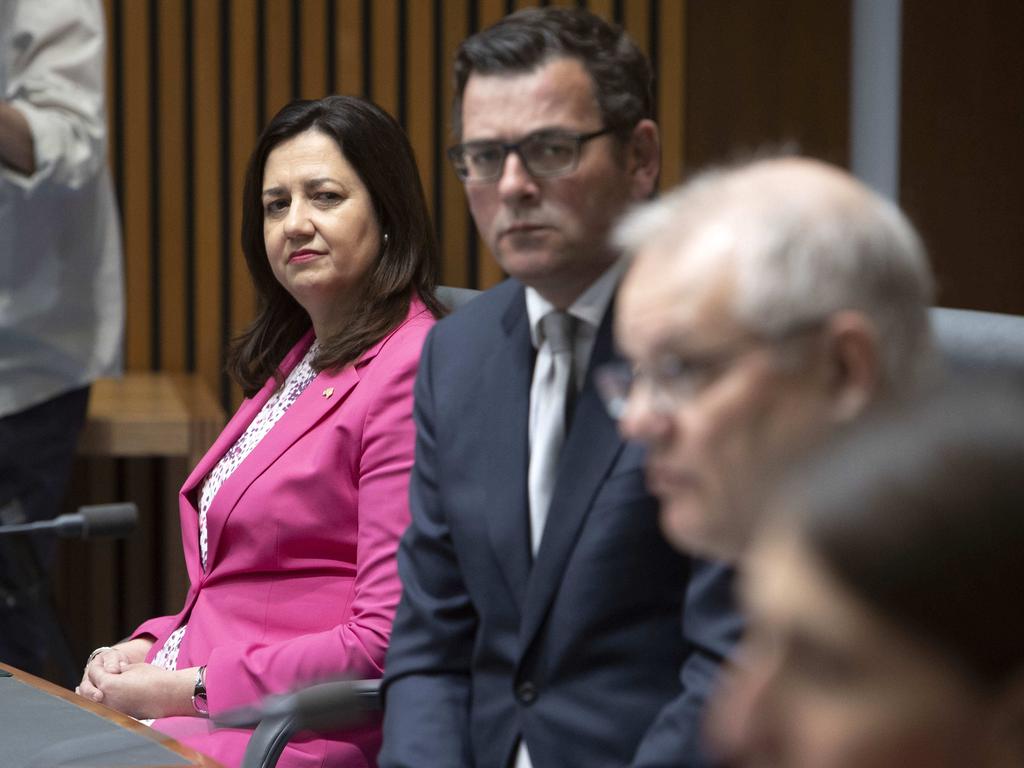In the age of multi-elite party system, ALP stumbles across old class divides
Study reveals a major decline in Labor’s viability amid dramatic reversal in the relationship between education and ideology.

This miserable record is underscored by the grim fact Labor has won a majority of seats at only one election (2007) in the past 28 years. It would be a mistake, though, to think Labor cannot win an election in the future. But, even then, could the party form a long-term government?
Thomas Piketty, the renowned French economist, has examined the demographic and ideological trends of political parties in 21 Western democracies in the post-war era. This study, co-authored with Amory Gethin and Clara Martinez-Toledano, charts the extraordinary change in voter support for Labor and Liberal parties in Australia. It makes for particularly gloomy reading for Labor.
Detailed data on Australia – compiled for a book that expands the study to 50 democracies and will be published in November – has been provided to Inquirer. This larger study has been undertaken by the World Inequality Lab. Piketty and Gethin are based at the Paris School of Economics, and Martinez-Toledano is located at the Imperial College London.
The central finding is that education and income, rather than class, are more accurate indications of voter ideology. Piketty shows that intellectuals increasingly are supporting centre-left parties (which he labels the “Brahmin Left”) while wealthy business people are more inclined to centre-right parties (known as the “Merchant Right”).
In the post-war years, the wealthiest and most educated voters tended to support centre-right parties such as the Liberal Party while poorer and less educated voters were inclined to support centre-left parties such as the Labor Party. But traditional voting allegiances have fragmented and there has been a dealignment of class affiliations when determining which party to vote for.
The wealthiest voters still opt for the centre-right and the poorest for the centre-left, but this too is changing. The more dramatic reversal is in the relationship between education and ideology: the highly educated increasingly are voting centre-left and the less educated increasingly are voting centre-right. This trend favours the Liberal Party because those without a university degree account for 75 per cent of voters.
The upshot, Piketty argues, is that we have shifted from a class-based party system to a multi-elite party system. This is why we have a Brahmin Left and a Merchant Right. This elitism has preceded the rise of populism and arguably has contributed to it. This reversal of educational cleavage is a global trend. It fundamentally challenges the purpose of centre-left parties and helps explain why so many are in danger of extinction.
In an interview with Inquirer, Gethin and Martinez-Toledano, confirm that the results for Australia mirror what they have found in other Western democracies.
“In the 1960s, class divides were particularly pronounced in Australia: voters identifying with the working class were more likely to vote Labor by 30 percentage points,” they say. “These divides have very gradually declined, so that this gap barely exceeds five percentage points today.

“At the same time, we observe a shift of higher-educated voters from supporting the Liberal-National Coalition to voting increasingly for Labor and especially for the Australian Greens. Australia has therefore also transitioned to a multi-elite party system.”
The data tells the story. In 1972, Labor’s support came from 65.9 per cent of voters who identified as working class. This fell to 35 per cent in 2019. In 1963, the Liberal Party’s support came from 57.1 per cent of voters who were upper or middle class. By 2019, this fell to 31.6 per cent.
Labor’s share of support from those on lower incomes was 61.8 per cent in 1963. This fell to 30.8 per cent by 2019. But support from those on the highest incomes increased from 18.4 per cent to 33.9 per cent between 1963 and 2019. In contrast, Liberals gained the support of 68.3 per cent of top income earners in 1963. This fell to 37.7 per cent by 2019.
In 1963, Labor won the votes of 55.4 per cent of those with a primary school education and just 19.5 per cent of those with university degrees. By 2019, its share of support from those with university degrees increased to 37 per cent. The Liberal Party’s share of support from those with university degrees was 63.1 per cent in 1963. This fell to 24.3 per cent by 2019.
Religion represents another marked transformation in party support. In 1963, the share of Catholics voting Labor was 65 per cent. In 2019, Labor’s share of Catholic voters declined to 34.1 per cent and its share of voters from other Christian faiths fell to 25.3 per cent.
Gethin and Martinez-Toledano argue that the rise of the Greens and the weakening of the class basis of support for Labor are the two forces underlying the emergence of a multi-elite party system in Australia.
“While support for Labor has become less concentrated among the working class and lower-educated voters over time, it does continue to attract a significant share of voters from poor backgrounds, more so than many other social democratic, socialist and labour parties in other Western democracies,” they note.
This, however, is weakening. The experience in Britain and Europe portends further dealignment of working-class support for Labor.
Another problem for Labor is that its voting base is very different to the Greens, exposing a challenge in appealing to dissimilar constituencies. Green voters are predominantly young, highly educated and urban living. Many of their political values are fundamentally different to Labor’s shrinking base.
The decline of class-based voting differences between the major parties accelerated during the past decade. Between 2010 and 2019, the Liberals received 42 per cent of voters in the bottom 50 per cent income band compared with Labor with just 36 per cent and 9 per cent for the Greens.

The Coalition – Liberals and Nationals – received 42 per cent of working-class voters. Labor also received 42 per cent across the decade. So, the working-class gap between Labor and the Coalition no longer exists when the Nationals vote share is included. The Greens attract only 7 per cent of working-class voters.
In examining the underlying causes for less educated voters switching their allegiances from the centre-left to the centre-right, the authors do not point to definitive explanations. They do, however, identify three complementary explanations that offer guidance. First, they suggest the rise of identity-based conflicts in the 1960s and ’70s, and more recently the increase in immigration, as factors that contributed to higher educated voters shifting left and less-educated voters shifting right.
“As environmentalism, gender equality or the rights of sexual and ethnic minorities (including the civil rights movements in the US) took a growing importance in public debate and civil society, they eventually gave rise to Green and ‘New Left’ parties whose support drew disproportionately from the young, urban middle class,” they note.
A second explanation is the increasing educational opportunities provided by governments to complete secondary school, to obtain a university degree and undertake postgraduate education. “In the 1950s and 1960s, it was relatively straightforward to design an egalitarian educational platform, as the majority of voters had at most primary or secondary education,” they argue.
“With the rise of tertiary education, social democratic parties have increasingly been viewed as the parties defending the winners of the competition for higher education, contributing to growing resentment among popular classes.”
Third, the adoption of more liberal economic policies – such as floating the currency; deregulating capital, product and labour markets; and reducing tariffs – has expanded opportunity and increased wealth but also challenged the ideology of class-based parties such as Labor.
The authors point to “the decline of progressive taxation”, “the sacralisation of private property” and the abandonment of any notion of fundamentally transforming the economic system as potential factors in this vote shift. “The moderation of traditional left-wing parties’ platforms, as well as in some cases their shift to promoting neoliberal policies, arguably contributed to the decline of class cleavages, their subsequent demise and the rise of identity-based conflicts,” they suggest.
Related to this, though, must be what Bob Hawke and Paul Keating long argued: that Labor has failed to win and maintain the support of those who benefited from the new economy that they crafted in the 1980s and ’90s. Labor needs to win votes in the centre ground of politics – the aspirational middle class – but it has not been able to develop a policy agenda that can appeal to them.
“The Labor Party today has not taken ownership and leadership of its own creation,” Keating told me in 2016. “That is the huge and wealthy middle-class economy which Labor exclusively created. Labor has now, and has had, the core Labor program, and it’s now got the core Labor vote, which is about 35 per cent.” Nothing has changed in the intervening years.
Labor’s declining voter support – which I have been writing about in Inquirer since 2010 – demands the party win back both working and middle-class voters to remain viable. Many identify as having working-class values but are now tradies, small-business owners and self-employed professionals. They are capital-owning – trading shares, monitoring their superannuation and negatively gearing investment properties – and prize social mobility and economic security.

The problem is that Labor is trapped by structural defects, namely a 19th-century organisational model tied to unions and captive to factions, and it is bleeding members and voters. Most Labor MPs have little work experience outside the labour movement and do not reflect their communities. Labor’s members do not reflect Labor’s voters. Not surprisingly, many voters no longer identify with the party they once strongly supported.
A fundamental problem remains Labor’s identity crisis. The party is unable to define clearly who it represents and what its purpose is. It lacks an animating policy agenda that is contemporarily relevant, addressing what voters both want and need.
Labor needs to avoid culture wars and identity politics, and develop policies that appeal universally based on core values rather than divide up the country by asking whose side they are on.
The takeaway from this landmark study is that these trends are accelerating and they are not favouring Labor. Indeed, Labor is losing support to the Greens on its left flank and to the Coalition (and parties such as One Nation) on its right flank. Labor is in slow decline, facing an existential predicament. Yet it is seemingly content to do nothing about it. In any event, it may be too late.
Political Cleavages and Social Inequalities, edited by Amory Gethin, Clara Martinez-Toledano and Thomas Piketty (Harvard University Press) is out in November. The World Political Cleavages and Inequality Database is at https://wpid.world/






It is undeniable that Labor, at least in federal politics, is in long-term decline. Labor received a primary vote of 50 per cent in 1943. Its vote was almost always in the mid to high 40s from the 1950s to the ’80s. Between 1990 and 2019, Labor’s vote tumbled into the 30s at eight out of 11 elections.